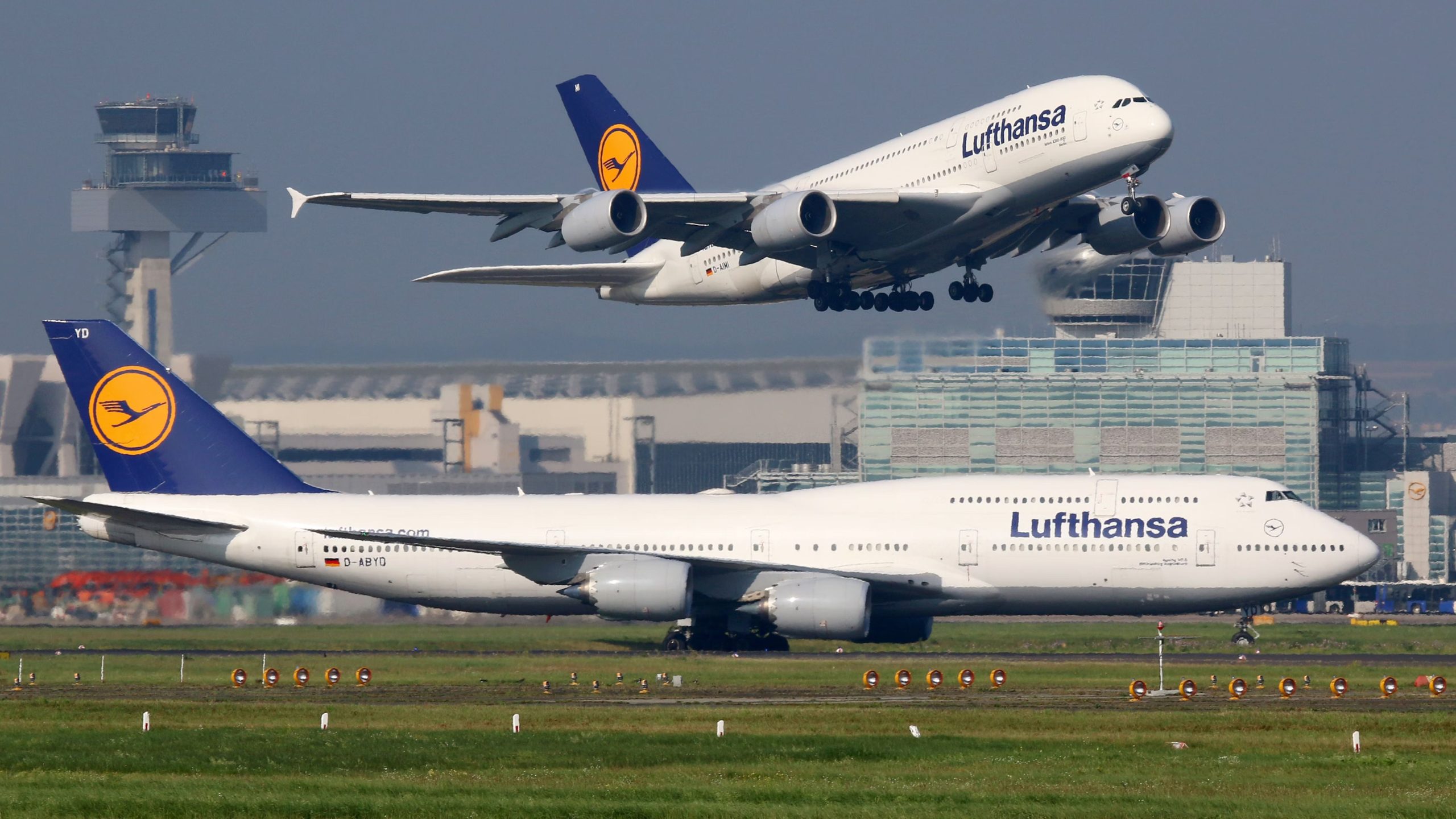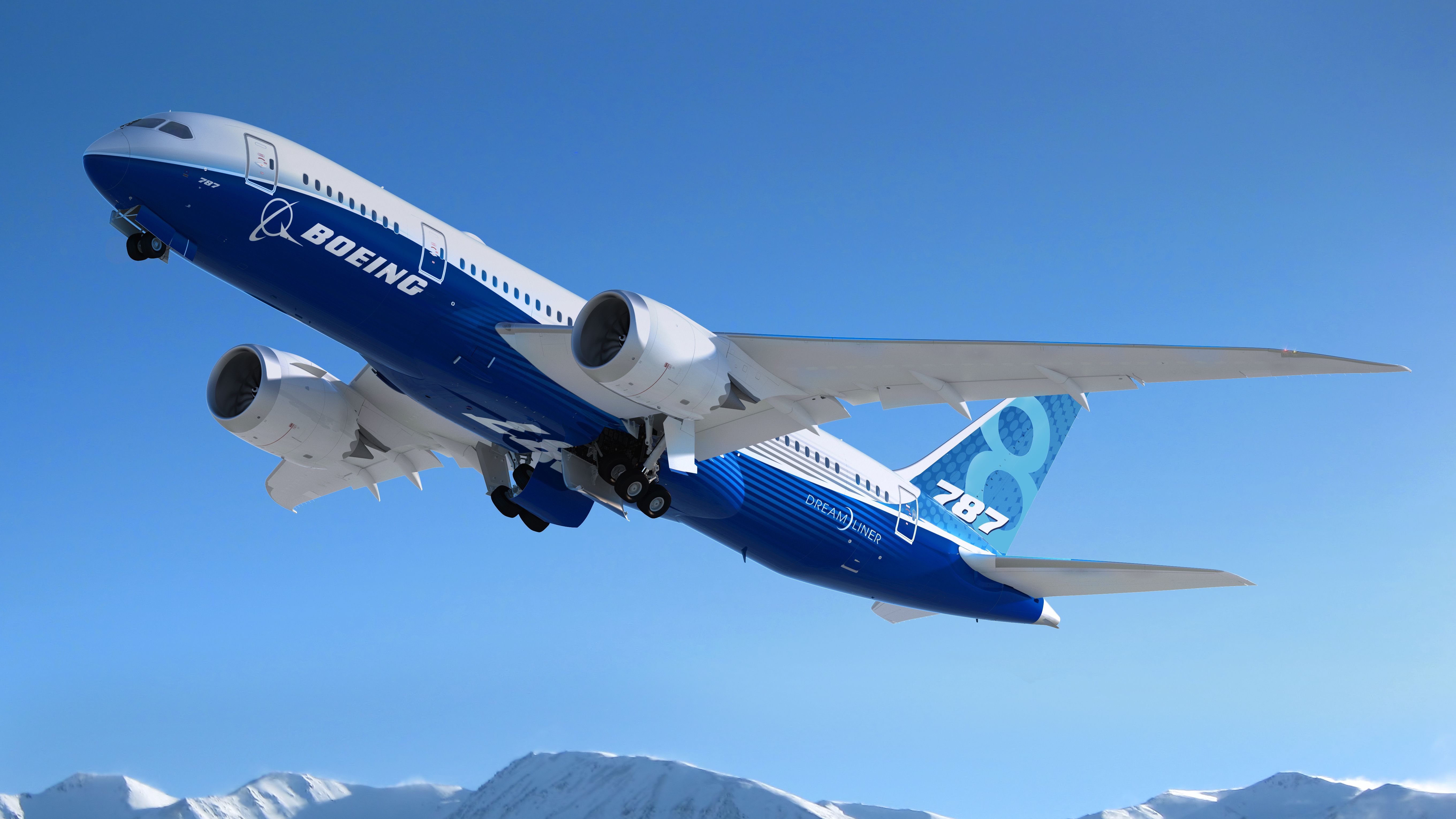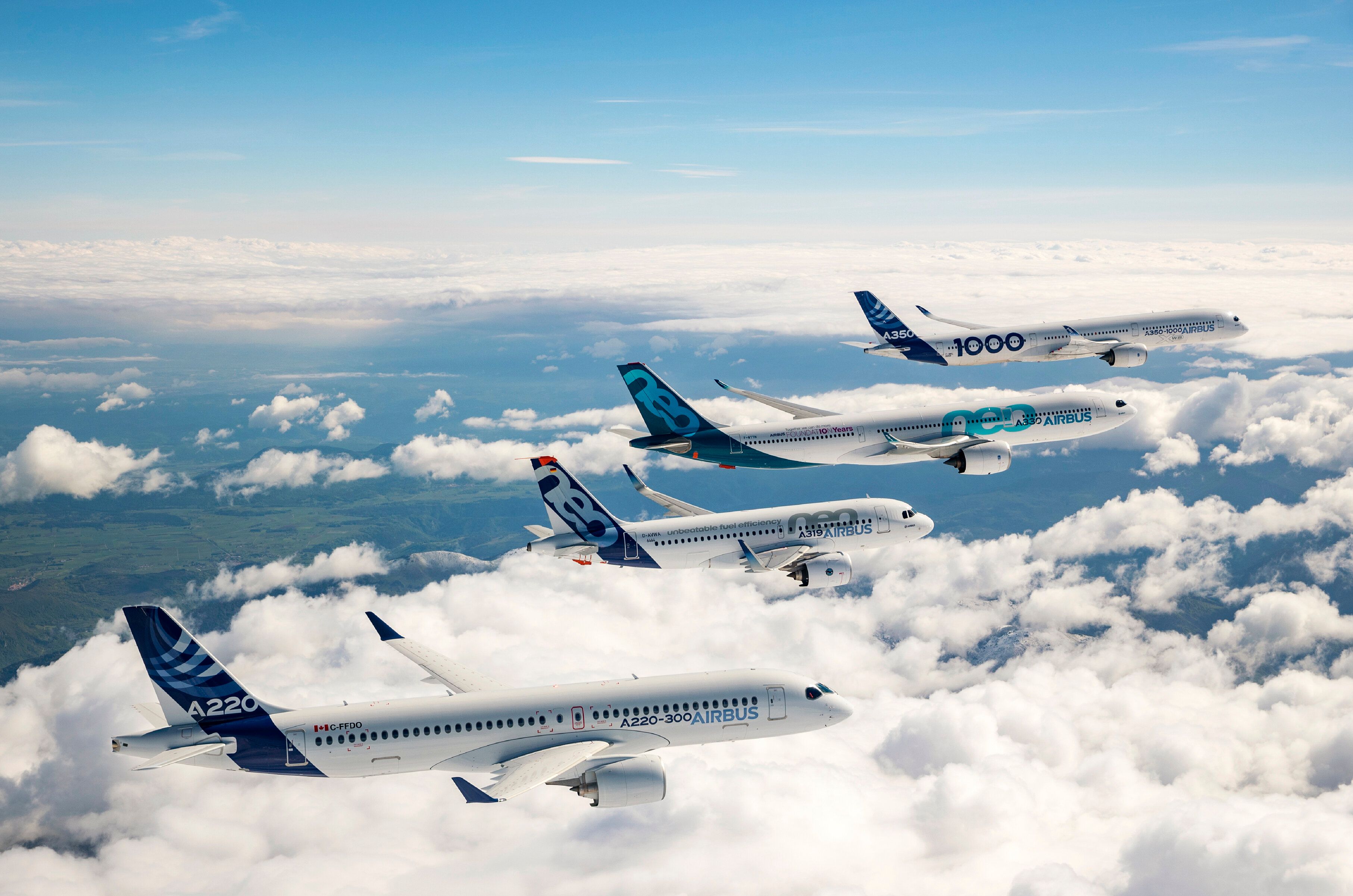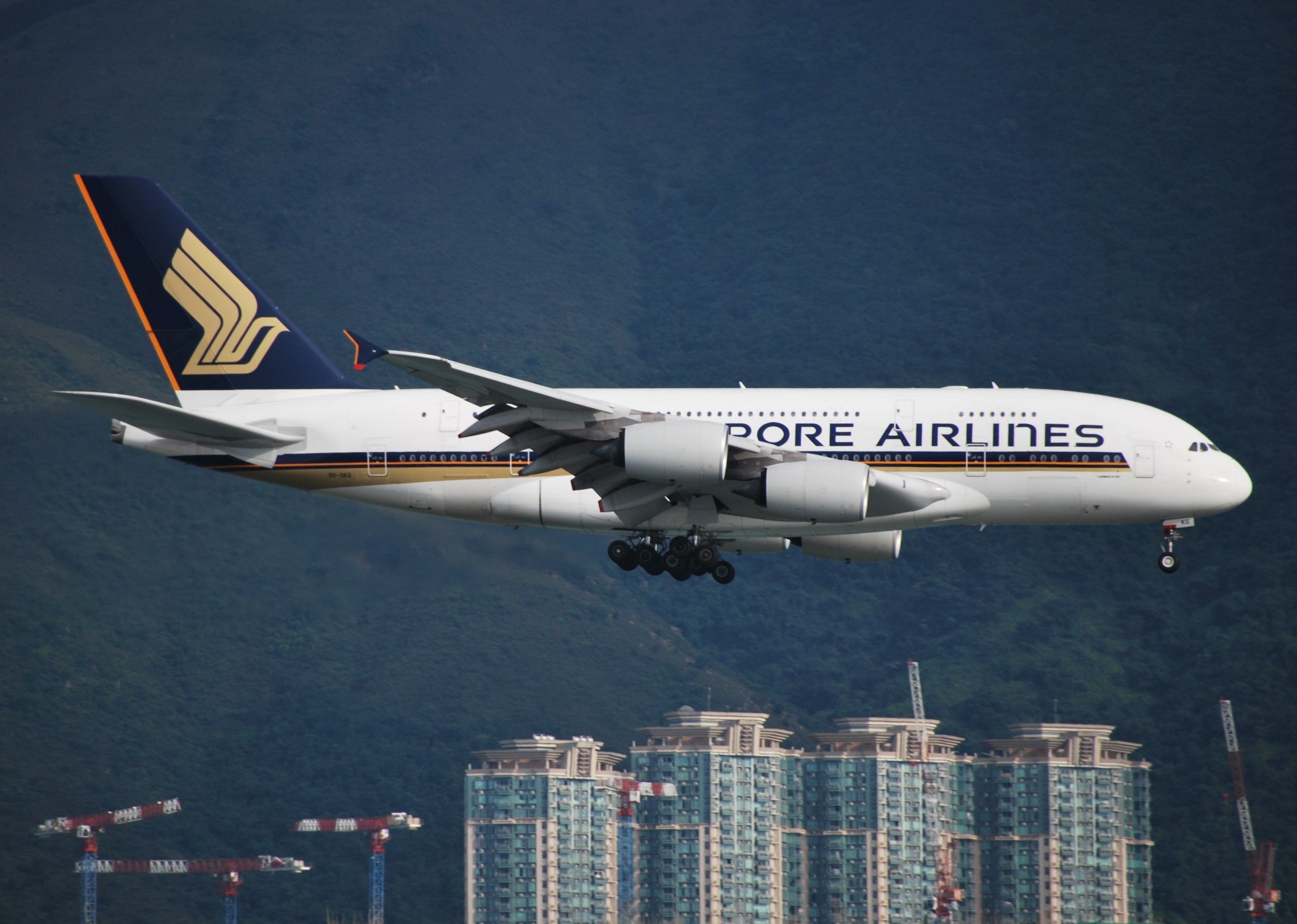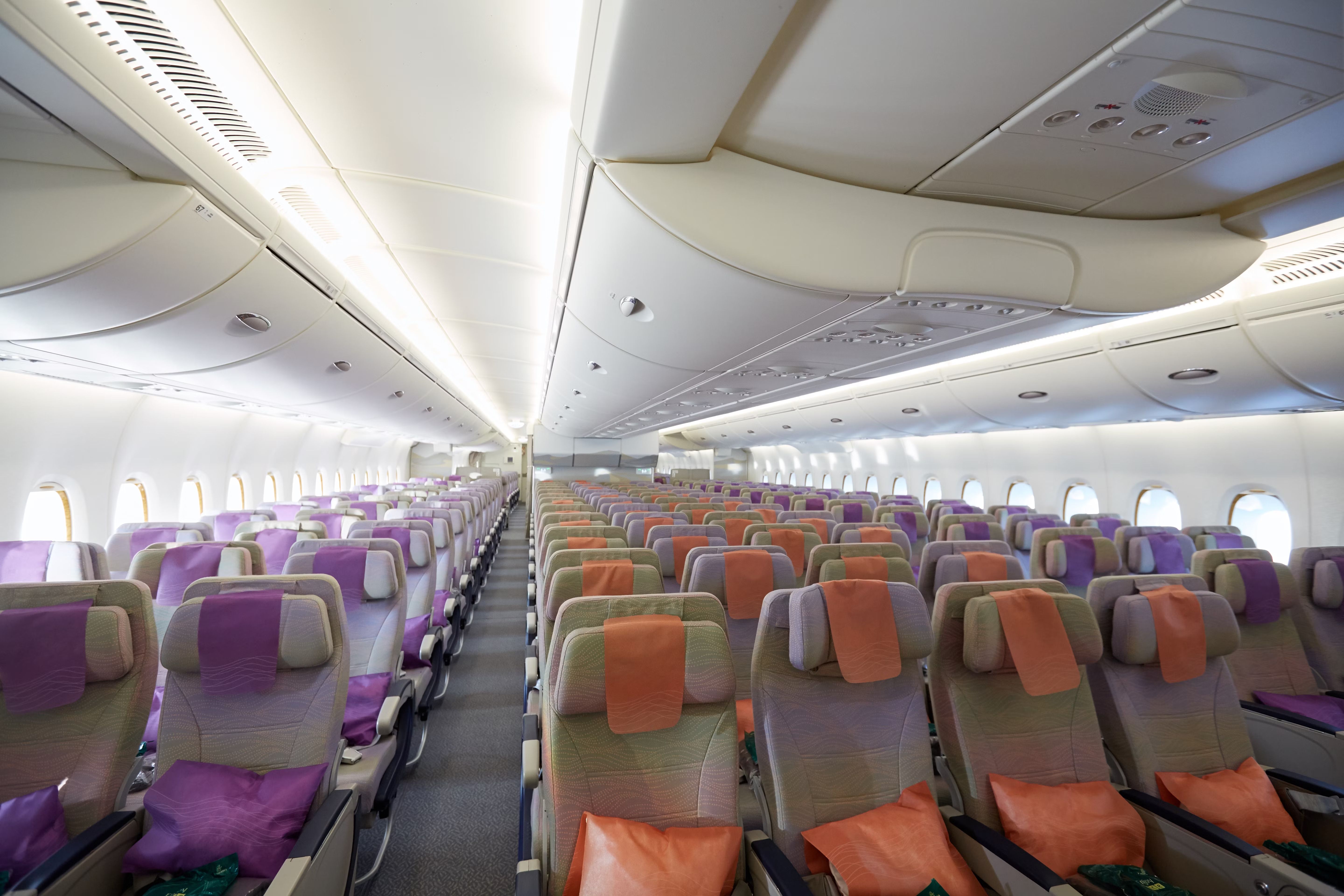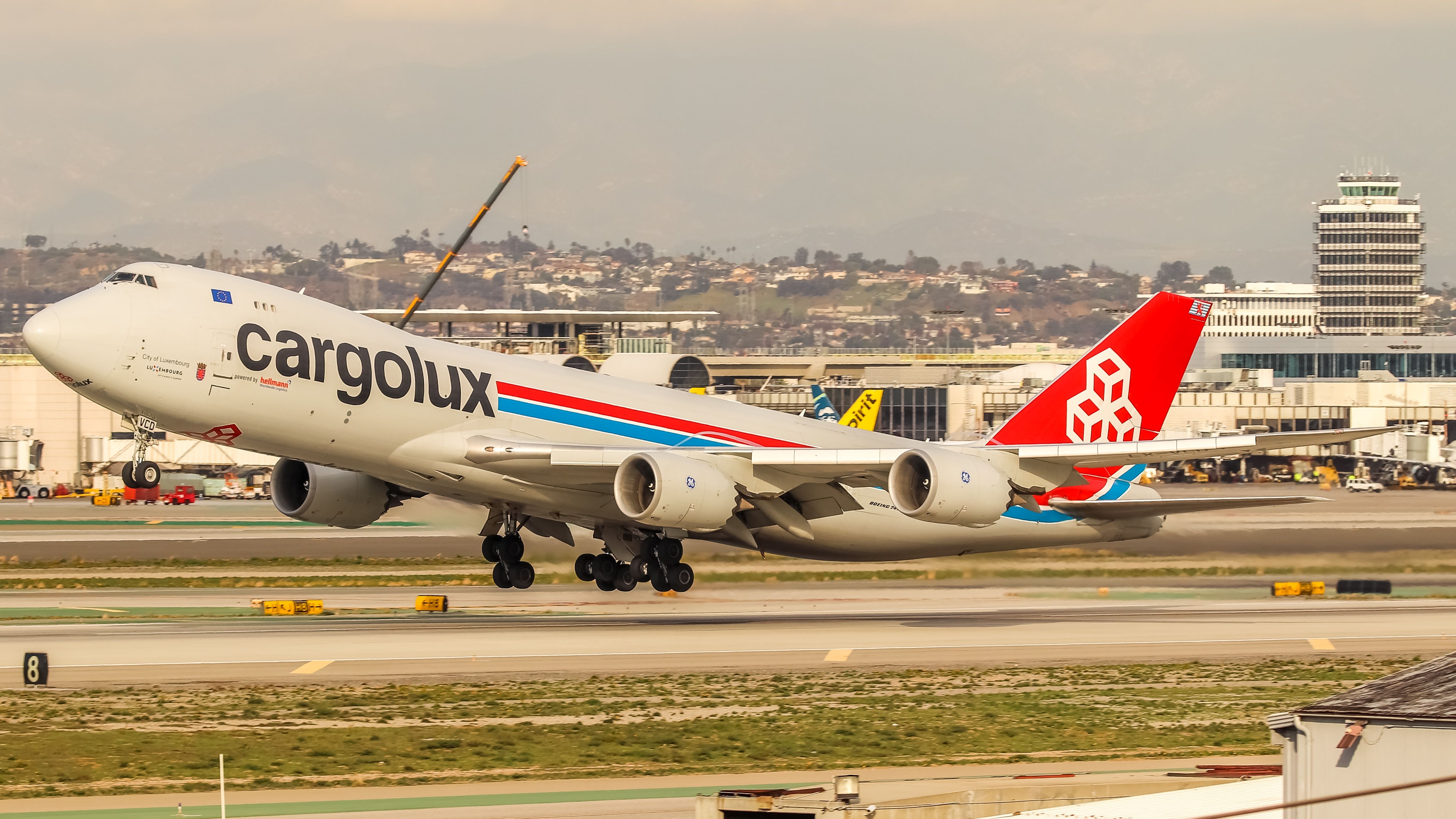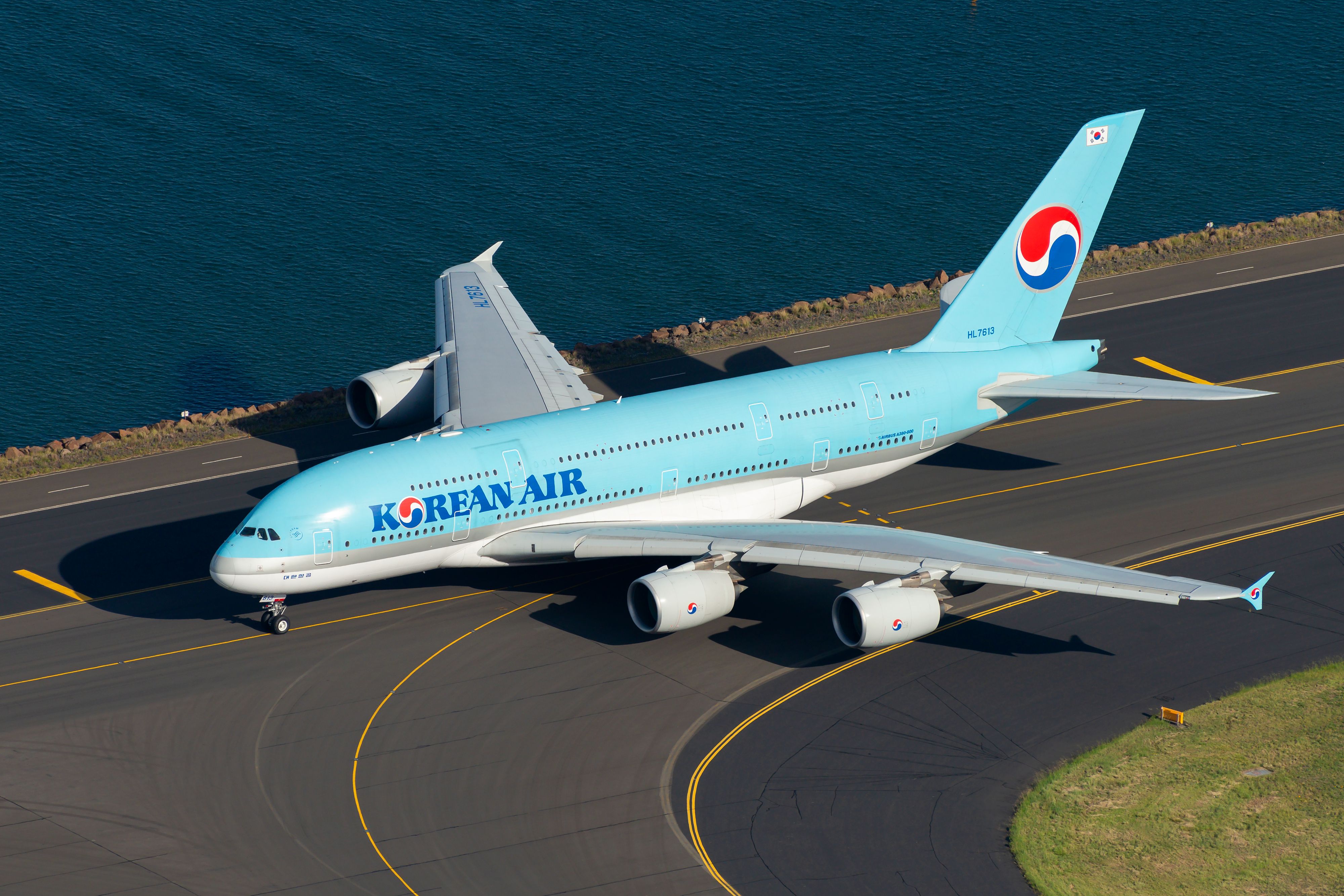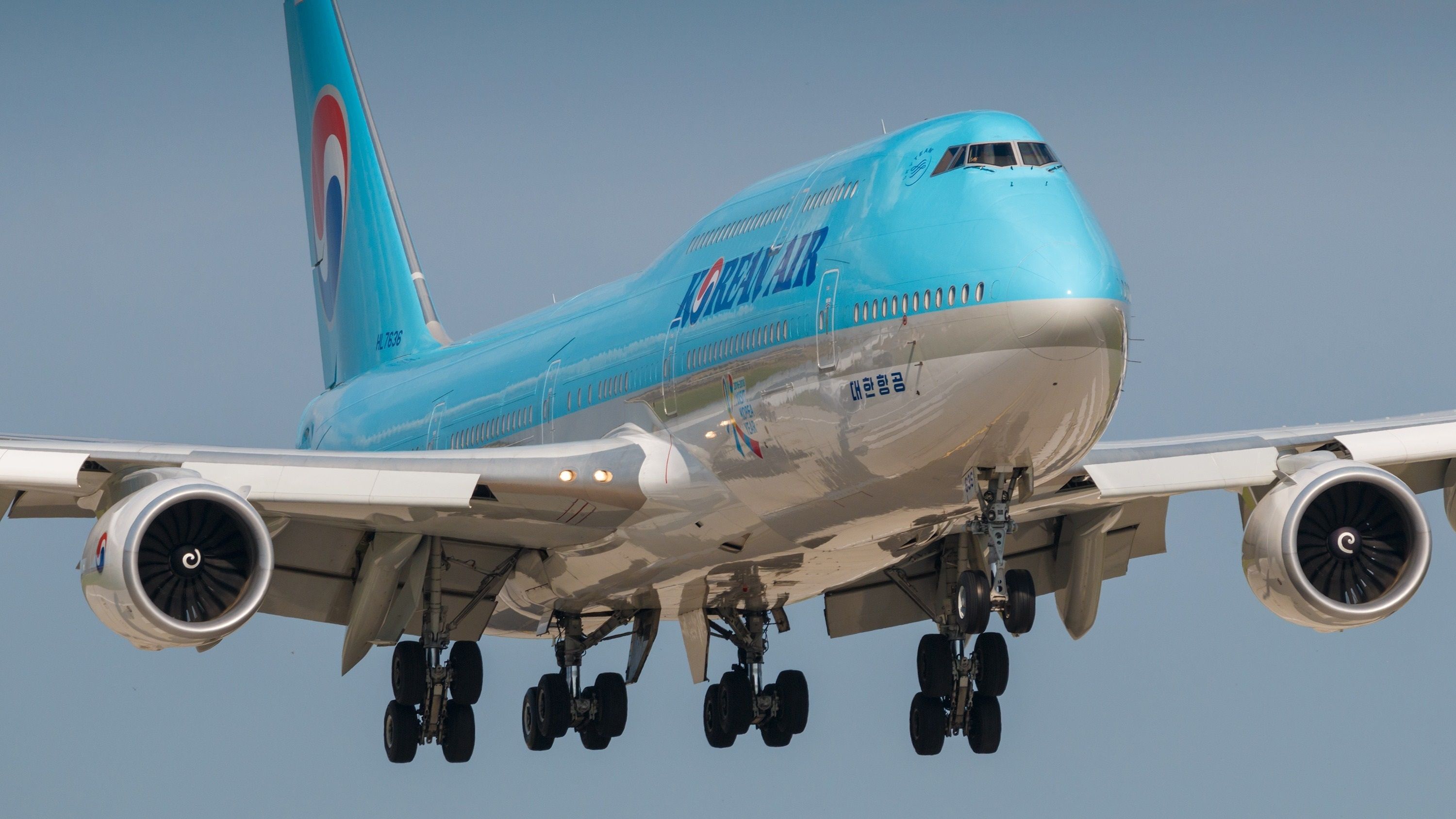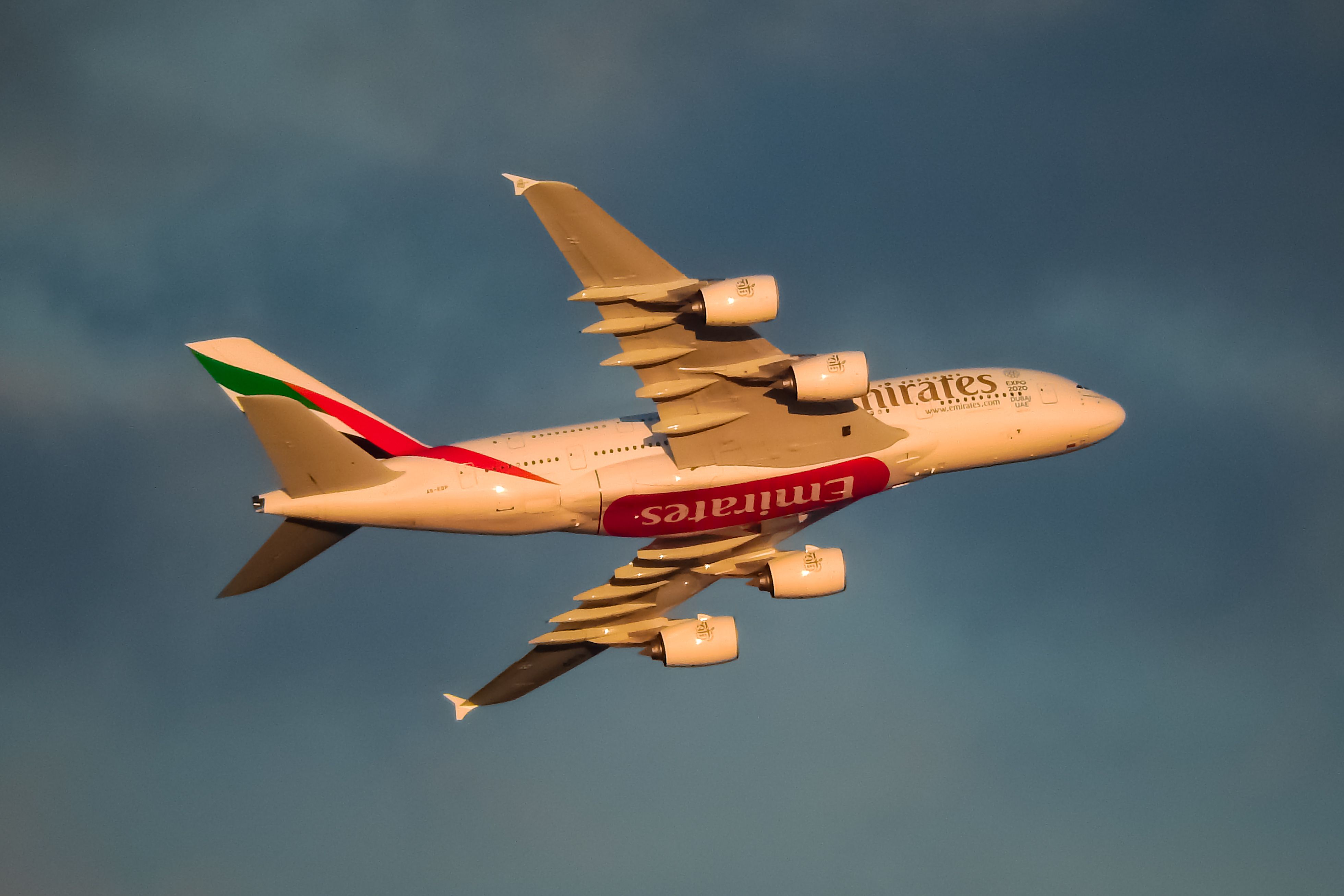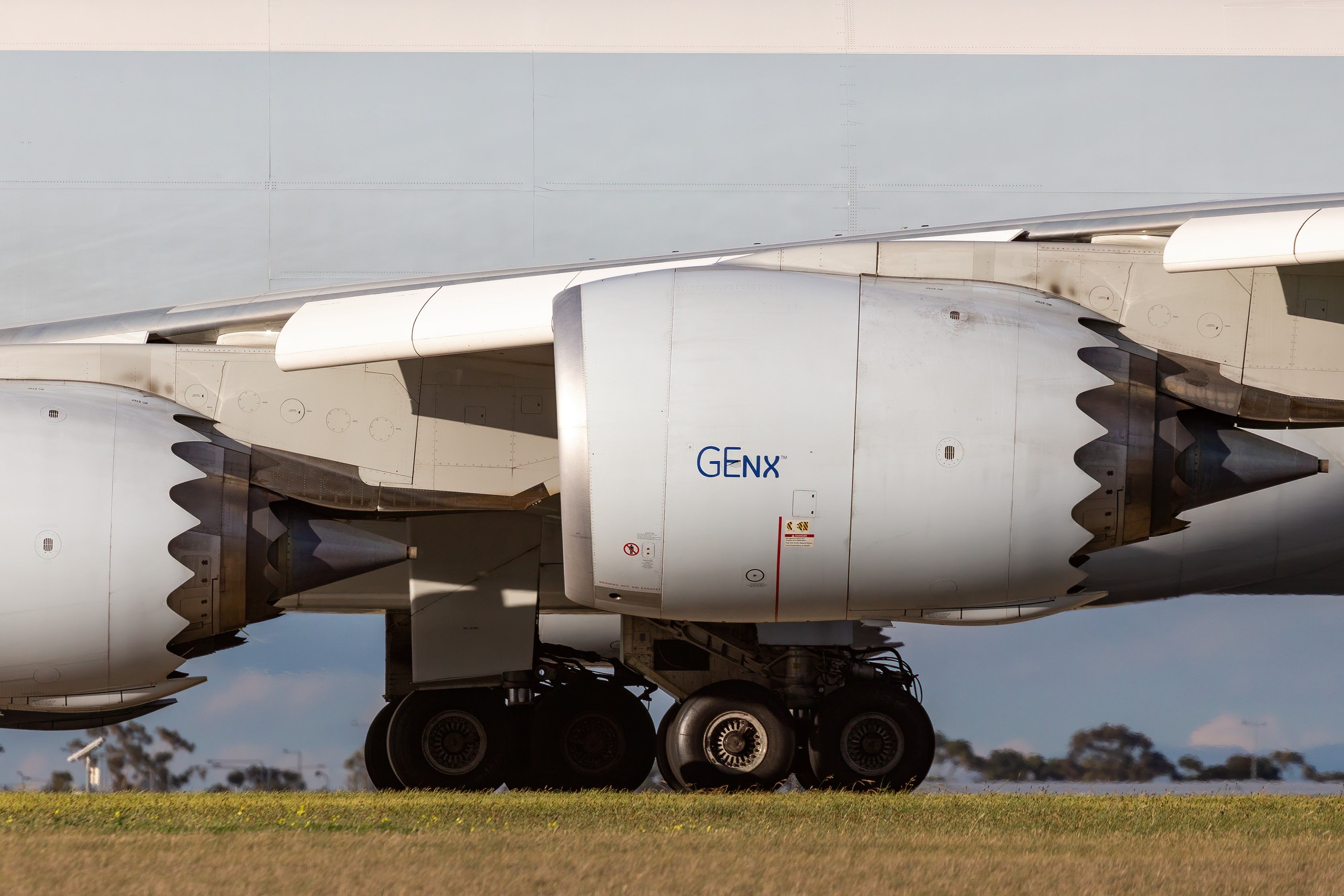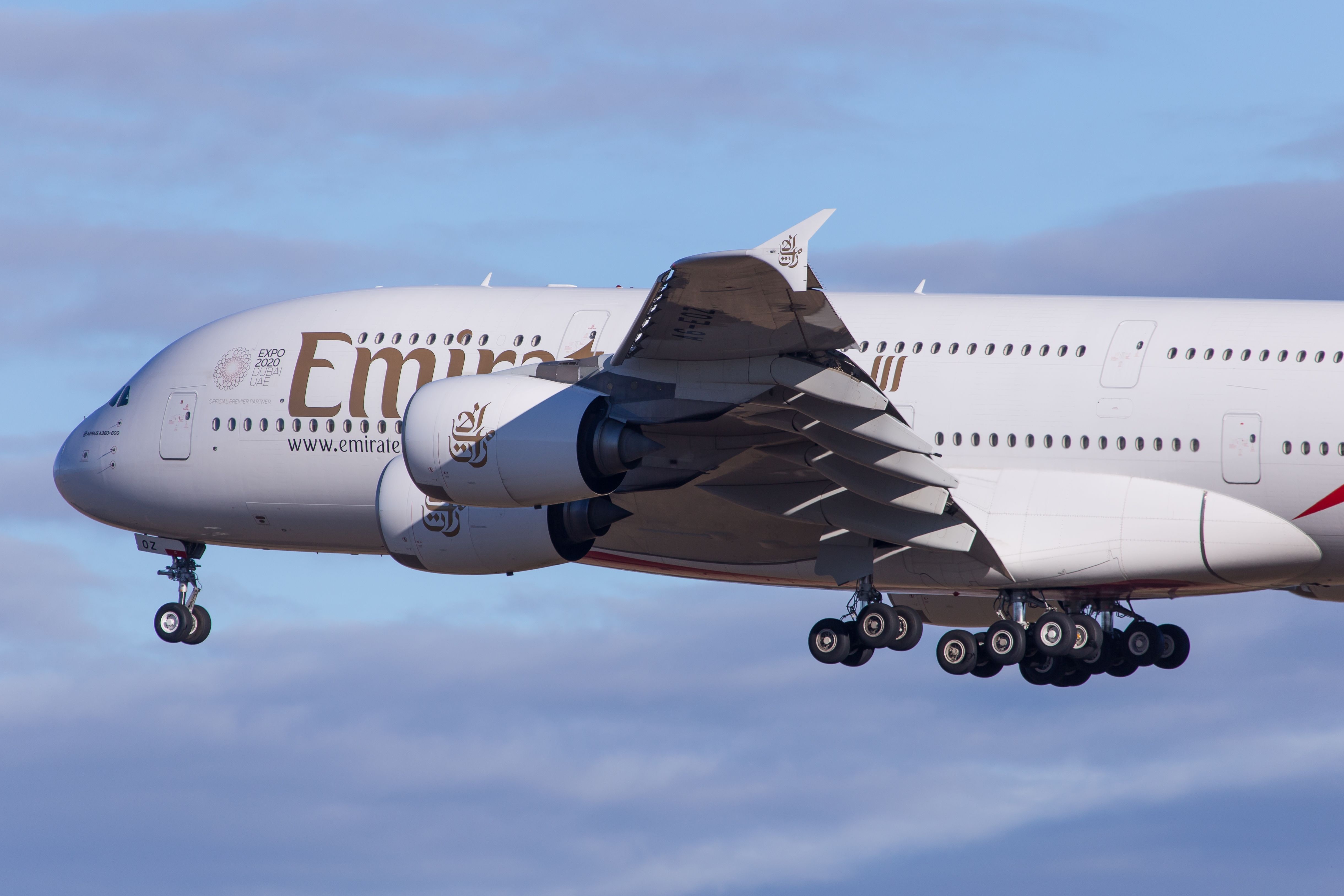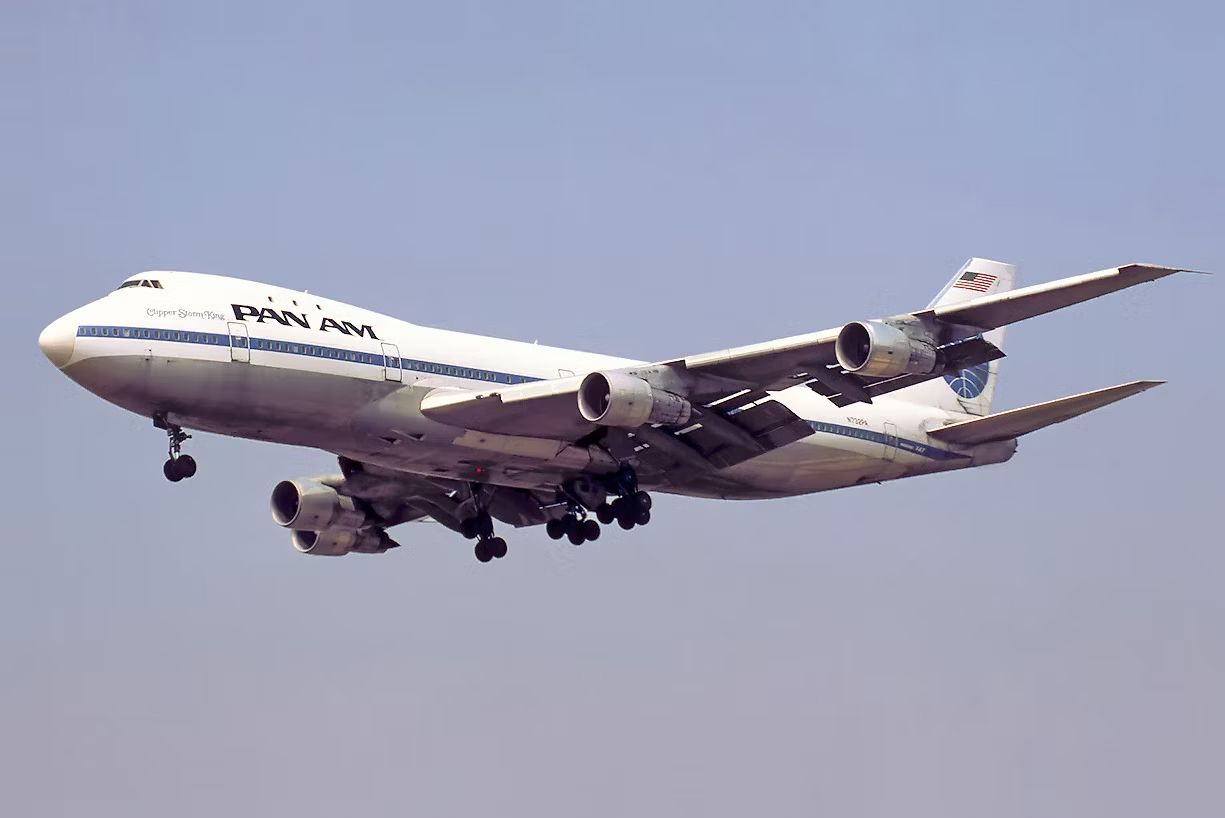Summary
- The Airbus A380 beats the Boeing 747 in passenger capacity, with the ability to accommodate 250 more passengers in a full economy configuration.
- The A380 offers more interior space, allowing for the inclusion of bars, showers, lounges, and private suites, making it a popular choice for luxurious first-class offerings.
- The 747 surpasses the A380 in cargo capacity, making it a more viable option for carriers looking to transport goods and maximize revenue from cargo operations.
When the Airbus A380 was introduced, many believed that it would mark the end of the original jumbo jet, the Boeing 747. Now, the Airbus A380 and the final 747 variant, the 747-8, are no longer in production, demonstrating that the end of an era for large quadjets is certainly imminent.
Nonetheless, at their peak, which aircraft was best? The fully loaded 800-seater A380 (in a terrifying all-economy configuration) or the long-range 747 with a private cabin onboard?
Comparison methodology
Firstly, we will be looking at the official specifications provided by both Boeing and Airbus. When it comes to technical specifications, we will be comparing the latest version of each model: The Boeing 747-8 and the most up-to-date version of the Airbus A380-800.
Additionally, we will pretend that we are an airline that is looking for a large-capacity aircraft for both passengers and cargo. While it goes without saying that a Boeing 747 freight variant would easily beat an A380 (as an Airbus cargo variant was never built), we will try to remain fair and imagine that we are primarily a passenger airline first.
In an era where the converted freighter market is so strong, and cargo is often carried in the holds of passenger aircraft, it is not entirely unrealistic to imagine the aircraft having a second life in the converted freighter space.
We will also be looking for the best flexibility and the most cost-effective operations, keeping in mind the importance of passenger comfort and engine noise. While we will take the secondary concerns into account, we will prioritize recommending what looks best on paper.
Photo: The Global Guy/Shutterstock
Passenger capacity
|
Type |
747-8 |
A380-800 |
|---|---|---|
|
Cockpit crew |
Two |
Two |
|
Typical capacity |
410 in 3-class |
555 |
|
Exit limit |
605 |
853 |
Carriers set up their aircraft to fit their specific needs. Lufthansa, the operator that introduced the 747-8 for passenger services, flies its units in four classes. It can fit up to 362 passengers throughout its first, business, premium economy, and economy classes. Lufthansa launched the plane with its new business seats, which were arranged in the form of a “V” whereby two neighboring seats are angled towards one another along a central axis.
Photo: Thiago B Trevisan | Shutterstock
Meanwhile, the largest operator of the A380, Emirates, has three different sets of capacity, depending on the distance of the flight.
- Three class – 489 Ultra Long Range
- Three class – 517 Long Range
- Two class – 615 Long Range
No matter how airlines configure their cabins, the Airbus A380 pushes the 747 right out of the gate with passenger capacity. In a full economy configuration, the A380 can handle 250 more passengers than the 747. Nonetheless, this is because it was designed nearly 35-40 years after the Boeing 747 first took flight, and Airbus knew exactly what metrics it wanted to focus on.
Determining a winner here is fairly straightforward. If an airline is going to purchase a large, inefficient four-engined jet, they will need whichever model allows them to fly the largest number of passengers, which can ultimately help a carrier break even given the A380 or 747’s high operating costs.
Winner: Airbus A380
Interior
The pair were both the epitome of flying with style for their generations. The 747 was indeed a pioneer when it came to spacious cabins while delivering top-quality customer experiences. However, the addition of so much extra cabin space onboard an A380 gives it more room for bars, showers, lounges, and full private suites.
One thing that the 747 has over the A380 is the creative ways that its early operators marketed its top deck. For instance, Delta Air Lines launched the “world’s first flying penthouse apartment” on its units back in the 1970s. Regardless, Airbus still wins this round by providing so much space but still enabling its operators to offer such classy interiors.
Notably, almost all of the world’s most luxurious first class offerings are found onboard Airbus A380s. However, given how few carriers operate the Queen of the Skies anymore, there truly aren’t that many examples of modern commercial airliners making better use of space on 747s than on the double-decker Airbus jet.
Winner: Airbus A380
Photo: Emirates
Room for goods
|
Type |
747-8 |
A380-800 |
|---|---|---|
|
Cargo Volume |
6,225 cu ft (176 m3) |
6,190 cu ft (175.2 m3) |
|
Length |
250 ft 2 in / 76.3 m |
238 ft 7 in / 72.72 m |
|
Height |
63 ft 6 in / 19.4 m |
79 ft 0 in / 24.09 m |
|
Cabin width |
20 ft (6.1 m) |
21 ft 4 in (6.5 m) |
|
Maximum takeoff weight |
987,000 lb / 447,700 kg |
1,268,000 lb / 575,155 kg |
|
Operating empty weight |
485,300 lb / 220,128 kg |
611,000 lb / 277,144 kg |
|
Max. payload |
167,700 lb / 76,067 kg |
185,000 lb / 83,914 kg |
Cargo is a very lucrative source of revenue for carriers, and our airline is no exception. Looking at cargo capacity, the Boeing 747 has more capacity despite having less powerful engines and less thrust.
Airbus has leaned hard into serving passengers and let Boeing slip ahead in this category. Additionally, we do have to admit that a cargo version of the Boeing 747 exists, and it is quite popular. The 747-8F is helping several major players ship goods across the globe. Atlas Air, UPS, Cargolux, Cathay Pacific, AirBridgeCargo, and Nippon Cargo, are all using the freighter for their operations.
Photo: Bradley Caslin/Shutterstock
According to a statement, when receiving its first 747-8 freighter, former Cathay Pacific director of cargo operations Nick Rhodes shared how vital shipping operations are to the company.
“Cargo is a very important part of Cathay Pacific’s business, accounting for around a third of our revenues in a good year. We are very excited about bringing the 747-8F into our freighter fleet because it will give us an increased payload over a longer range with superb operating economics, enabling us to provide an even better service to our customers. These new aircraft will play an important role in our continued efforts to develop Hong Kong as a leading international air cargo hub.”
Moreover, in another statement, Qatar Airways CEO Akbar Al Baker also emphasized the value of cargo services when he received the Doha-based airline’s first of two 747-8Fs in 2017.
“The addition of our very first 747-8 Freighter is a significant moment for our Cargo division, and a welcome addition to our 20-strong cargo fleet of wide-body aircraft.”
With society now relying on the delivery of goods more than ever, there could be an extension to the life of the 747. Unsurprisingly, the Airbus A380, which was designed with no cargo considerations whatsoever, is far behind in this category.
Winner: Boeing 747
Range and fuel capacity
|
Type |
747-8 |
A380-800 |
|---|---|---|
|
Fuel capacity |
63,034 US gal / 238,610 liters |
85,472 US gal / 323,546 liters |
|
Cruise |
Mach 0.86 / 914 km/h |
Mach 0.85 / 903 km/h |
|
Maximum operating limit speed |
Mach 0.9 / 956 km/h |
Mach 0.89 / 945 km/h |
|
Range |
7,730 NM / 14315 km) |
8,200 NM / 15186 km |
|
Ceiling |
43,100 ft / 13,100 m |
43,000 ft / 13,100 m |
|
Engines (4×) |
GEnx-2B |
Rolls-Royce Trent 900 |
The range of the A380 beats the 747-8. Even though the difference is not overwhelming, it is enough to provide an advantage for ultra-long-haul operators. Even when it comes to fuel capacity, this model leads the way. Immediately, it is evident that the Airbus A380 can burn through just over 20,000 more US gallons of fuel than the Boeing 747.
Winner: Airbus A380
Photo: Thiago B Trevisan | Shutterstock
But what about fuel efficiency?
Just because Airbus’ jumbo has more fuel doesn’t mean that it’s any cheaper to run. Boeing claims that the 747-8 is more cost-effective per seat per mile than any other aircraft. However, Airbus claims that the A380 is the most efficient jet in the world, and on a per-passenger basis, it can be if an airline is able to fill all of its many seats.
It does not make much sense to compare the two jets in fuel burn and seat-mile cost. The planes are considerably different in size. In this case, the standard metrics to measure efficiency do not come into play. Nonetheless, fuel efficiency is one of the key reasons why operators are choosing to veer away from both types. If you want something with good operating economics, four engines simply aren’t the way to go anymore.
Winner: Draw
Photo: Rebius/Shutterstock
Which aircraft is more popular with carriers?
Let’s look at how the market reacted to both of these aircraft and see if a pattern emerges. These are the orders both planes received throughout their histories:
Boeing 747 orders: 1,573 – averaging approximately 30 per year since its first flight in 1968.
Airbus A380 orders: 251 – averaging around 13 per year since its first flight in 2007.
And just to address the elephant of the room on the sales front: the A380 was canceled before the 747. So, it’s pretty clear that even from a sales point of view, the Boeing 747 was more popular.
Winner: Boeing 747
Photo: NYC Russ | Shutterstock
The cost of the jets
It is difficult to set a current price for these jets since they are no longer produced by either OEM. All A380s and 747s that get acquired in future years will be second-hand planes. With that in mind, this is an approximation of the current prices based on several reports:
Airbus A380 – Back in May, the price was likely around $327 million (that’s what Airbus reportedly would pay Lufthansa for six second-hand A380s earlier this year). Recently Global Airlines became the first A380 second-hand airline buyer. Nonetheless, the price it paid was not disclosed, and pinning down an actual value can be rather tricky.
Boeing 747-8 – $419 million
It seems right now, the 747 is the most expensive to buy but less expensive to operate. Nonetheless, the market for second-hand Queens of the Skies has been more lucrative and alive than that of the A380. The Airbus superjumbo has struggled to get new operators. Of the 254 A380s ever built, 16 have already been scrapped, according to data from ch-aviation. While it is easy to find a second life for a 747 as a converted freighter, this option simply doesn’t exist for used A380s.
Winner: Boeing 747
Longevity and practicality
The A380 was built for the wrong era. It was built at a time when airlines wanted to go bigger and more luxurious, but that is no longer the case. Today, airlines are looking for smaller aircraft that can operate between regional airports, and massive flying machines with showers and lounges just don’t have a place anymore.
If an airline can fill up an entire A380, then it can be a huge profit driver, but that is becoming increasingly rare. Only some carriers have truly been able to master the process of operating the A380.
Capacity is a crucial pull factor for the A380. Therefore, with more precise options, the plane is becoming increasingly redundant. In recent years, several airlines have been planning the phase-out of the superjumbo in favor of more cost-effective solutions. It has only been in service since 2007, but companies quickly realized the drawbacks of having such a monument.
Additionally, the A380 has very weak economies of scale for most carriers, which only operate a handful of the type. For carriers like Emirates, which operate a massive A380 fleet, are able to achieve far stronger operating economics.
It’s for this reason that the smaller capacity 747 just seems to win this round. Nonetheless, it is a bittersweet victory, as the sun is also setting on the icon. Modern aircraft such as the Airbus A350 and the upcoming Boeing 777X almost match capacity but with massive improvements in design, cost, and fuel efficiency.
Winner: Boeing 747
Recent industry changes
The global health crisis has undoubtedly rocked the aviation market in recent years. Two of the industry’s most significant casualties are this pair. Subsequently, both widebodies were already being phased out by airlines across the continents. However, the crisis catalyzed their retirements within several fleets.
For instance, after 49 years of flying the Queen, KLM ended passenger operations with the plane in March 2020. The flag carrier of the Netherlands had a rich history with the jumbo, and the two grew within the industry together with a relationship that lasted nearly five decades.
Additionally, Virgin Atlantic was going to retire the 747 in 2021, but the UK-based airline decided to do it in 2020. The carrier and the jet created an iconic partnership that symbolizes an exciting period for British passenger aviation.
Moreover, that summer, Air France retired its last A380 jet. The flag carrier of France was initially going to phase the type out by 2022. However, the changes in circumstances caused the airline to make amendments to its plans.
Lufthansa suspended A380 operations for three years due to the pandemic. Nonetheless, the airline resumed operations with the superjumbo this month in services between Munich and Boston. More services will continue in July and during the winter reaching other destinations such as New York’s JFK, Los Angeles, and Bangkok.
One of the most famous groundings in 2020 is related to the Qantas A380. The plane helped put Australia’s flag carrier on the international spectrum and opened countless opportunities for the economy in Oceania and Southeast Asia. Qantas was going to let go of its six remaining units before the year was over. However, it soon felt like there was no time like the present. In an interesting twist of fate, Qantas is now flying the A380 again.
The likes of Qatar Airways have also returned the plane to its services after long-term groundings. Nonetheless, the airline’s CEO stated that he sees no long-term future in the plane.
However, the rise of leisure travel demand has led the A380 to remain a viable option on certain routes. For Japanese carrier ANA, the A380 provides an ideal option for high-volume services to Hawaii.
Despite both types being rapidly phased out, the 747-8 was not officially retired due to the pandemic. Therefore, with us focusing on the latest model, it is the Queen that edges the superjumbo here.
Winner: Boeing 747
Photo: Ryan Fletcher | Shutterstock
Afterlife
Over the decades, Boeing 747 variants have found careers in other fields after being retired by passenger airlines. Other than going on to become cargo units, several editions have been put to use creatively in different ways.
For instance, NASA took on a former Pan Am and United Boeing 747 and transformed it into the Stratospheric Observatory for Infrared Astronomy (SOFIA), although this was also recently retired after years of performing incredible missions. It held a 17-ton, 8-foot-wide infrared telescope that is mounted behind a large sliding door. This aircraft flew into the stratosphere at 38,000-45,000 feet, putting it above 99% of the Earth’s infrared-blocking atmosphere for astronomers to study the solar system.
Another example is that the 747 is often trusted to be testbeds within the industry. Recently, a unit that had been with Qantas for nearly five decades was given a new role as Rolls-Royce chose to use it for testing. The plane will trial current and future jet engine technology that will help to revolutionize aviation and reduce emissions. This procedure will hopefully break new ground when it comes to efficiency.
Of course, it’s early to say whether the A380 will prove to be as useful in its afterlife. Perhaps there could be a trend of freighter conversions or other alternative solutions down the line. We are already seeing the A380 being used for testing on next-generation fuel solutions such as hydrogen. However, the 747 has already proven its versatility in several ways.
The US Air Force, which has been seeking a replacement for the current modified 747s that operate as Air Force 1, will use newly modified 747-8 jets to serve as new presidential transport. Ironically, it may be the US president who flies in the last passenger 747 in years to come.
In the next decade, Boeing 747s will continue to dominate the cargo space, remaining among the world’s most capable freighters. For the rest of the 2020s, however, passenger operations with each jet will likely be at the whim of jet fuel prices and passenger demand. It is likely that carriers with smaller A380 fleets will retire them the next time economic conditions render their operations unfavorable. Currently, only 130 Airbus A380s and 440 Boeing 747s are still flying today, and those numbers will only continue to fall.
Winner: Boeing 747
Photo: Wirestock Creators I Shutterstock.
Leaving a legacy
Altogether, the legacy of the Boeing 747 speaks for itself. Despite it being half a century old, it has managed to adapt over the years and still find a role within the industry. The fact that the most recent upgrade of the jet was only introduced last decade shows that there was a demand for the type until recently.
Meanwhile, for all of its grandeur, several Airbus A380s are being permanently grounded before they could reach their 15th birthday. By the time the decade is over, it could be a real treat to see one in the skies. Ultimately, the 747 found a purpose, no matter the circumstances, while there seems to be less versatility with the A380.
It is sad to see the two powerhouses become less prevalent as the world continues to change. Regardless, there are undoubtedly millions of passengers that have experienced so many meaningful moments thanks to the two widebodies.
In conclusion, it’s difficult to balance these two aircraft from the perspective of a singular airline. For Emirates, the A380 has been the linchpin of the carrier’s fleet and will be for the foreseeable future. For America’s three major legacy carriers, the A380 was far too large to truly serve any purpose. The 747, however, was replaced by many airlines with the A380, and yet the Queen of the Skies still serves a far more important historical purpose than the double-decker jumbo.
Overall winner: Boeing 747
Nonetheless, there are undoubtedly those that have their favorites when it comes to the two widebodies. The same goes for when comparing other long-haul airliners across the globe, such as the A380 and the A350. Moreover, it also comes down to practical use for airlines.
If a carrier can continue to fill every seat on its A380 aircraft throughout the years, then the superjumbo may be the preferred option. However, the 747 has shown its ability to adapt, and even if it goes on to be a rare sight at passenger airport grounds, it will continue to live for many years in other roles.
The last A380 was delivered in 2021, while Boeing handed over the last 747 to Atlas Air in January 2023. Looking back, we will remember both types as aircraft that pushed the boundaries of aviation.
Altogether, what are your thoughts about the Boeing 747 and Airbus A380? Out of the two widebodies, which one do you think is better, and why? Let us know what you think of the jets in the comment section.

